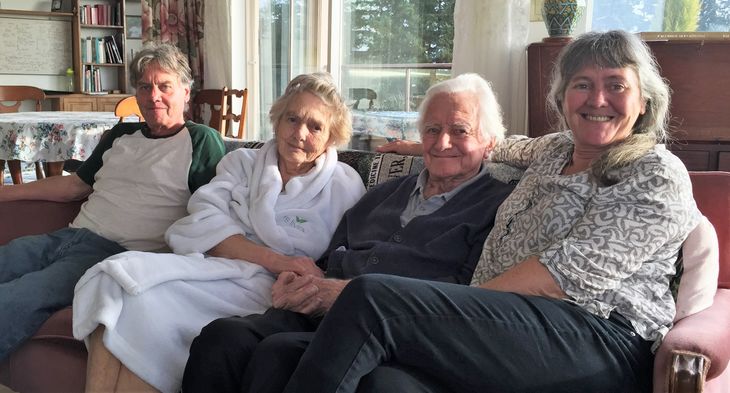Aging Parents: Caregiving

On December 12, 2015 my husband and I got a phone call from one of his brothers. It was bad news. Their 87 year old mother was in hospital in grave condition. The thoracic aortic aneurysm, which she had had for many years, had grown to the size of a cantaloupe and was now leaking. The biggest concern in that moment was her prognosis for recovery. It was poor. A hospital physician wrote:
1. Family is all gathering here to help support her. They are aware of the grim prognosis but remain somewhat hopeful for a miracle.
The second biggest concern for us was who would care for our 88 year old father (my father in law)?
Overall, he requires constant care and supervision. He has vascular dementia and has suffered at least one stroke that has left him physically limited. In the previous year he had a fall and seriously fractured his left arm. Until my mother in law’s hospitalization, she was his primary caregiver. Related to her caregiving role, the hospital physician wrote:
2. The patient is a caregiver to her husband with advanced dementia. Social Work has [been] seen regarding this for possible end of life planning and what the implications may be for her husband.
We all felt helpless. The matriarch of our family was dying before our eyes and there was nothing we could do about it. However, not all hope was lost.
Her treating vascular surgeon said he could try putting a stent in her aorta. But the risk of dying during the surgery was great. One by one, we said our blessings...and our good-byes. Her immediate family had gathered by her bedside. The rest of us wrote cards, emails, and text messages. She was ready to die.
Well, a miracle happened! Not only did she survive the life-threatening surgery, she was recovering nicely -- until she was side-lined again by a malfunctioning liver. As a family, we are all pitching in to help her. But, while she has recovered enough to care for herself, she is no longer able to care for her husband – the patriarch of our family!
For the past three months my sister in law has been his primary caregiver. He has been living full time with her. She and other members of her immediate family having been providing much of the round-the-clock care of and supervision for him. Most caregivers would agree that this is both physically and emotionally taxing on the individual caregiver and family.
A Statistics Canada Report: Portrait of Caregivers, 2012 highlights several important facts related to caring for aging parents:
- At some point in their lives, nearly half (46%) of Canadians aged 15 and older, or 13 million Canadians, have provided care to a family member or friend with a long-term health condition, disability or aging needs;
- Women represented the slight majority of caregivers in Canada at 54%. They were also likely to spend more time per week on caregiving activities than male caregivers;
- Caregivers reported having multiple responsibilities. In 2012, 60% were working at a paid job or business and 28% had children under the age of 18; and
- Despite these competing demands, 73% of employed caregivers were satisfied with their current balance between work and home-life, with one in ten saying they were dissatisfied.
Currently, my father in law is on several waiting lists for entry to a private care nursing home. My sister in law is adamant that the best care for her dad can only come from family. On the other hand, other family members want to give a nursing home a try. My husband and I have offered to take our turn having him live with us. If so, my father in law will arrive on April 1, 2016 and stay for about three to four months.
Follow the trials and tribulations of our family’s circumstance on aging parents at Disability Matters.


Comments (0)
This thread has been closed from taking new comments.
Related Posts
Aging Parents: Our Way…
My 88 year old father-in-law was diagnosed with vascular dementia in 2014. According to the gerontologist,…
Read moreThe Physical Decline From…
A few years ago, my father-in-law started to complain about his balance, feelings of dizziness, and muscle…
Read more